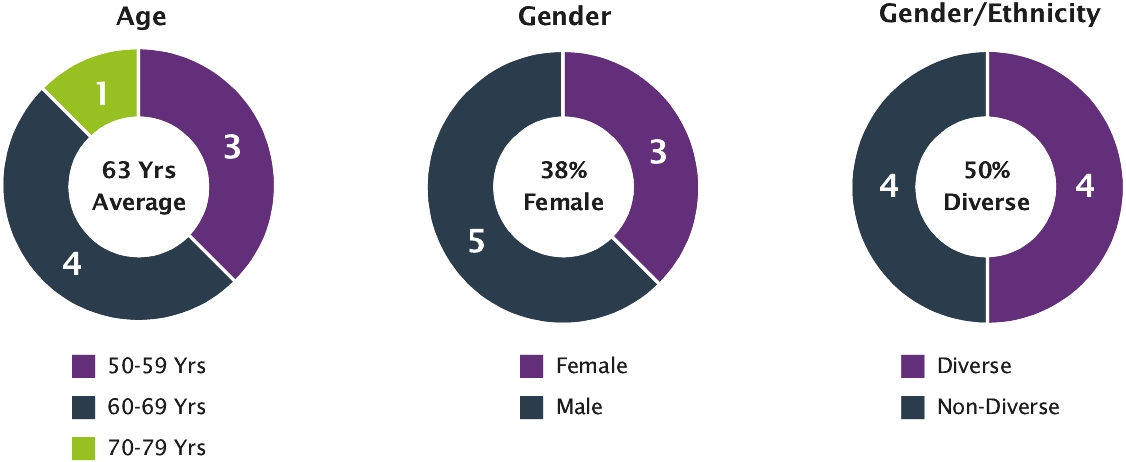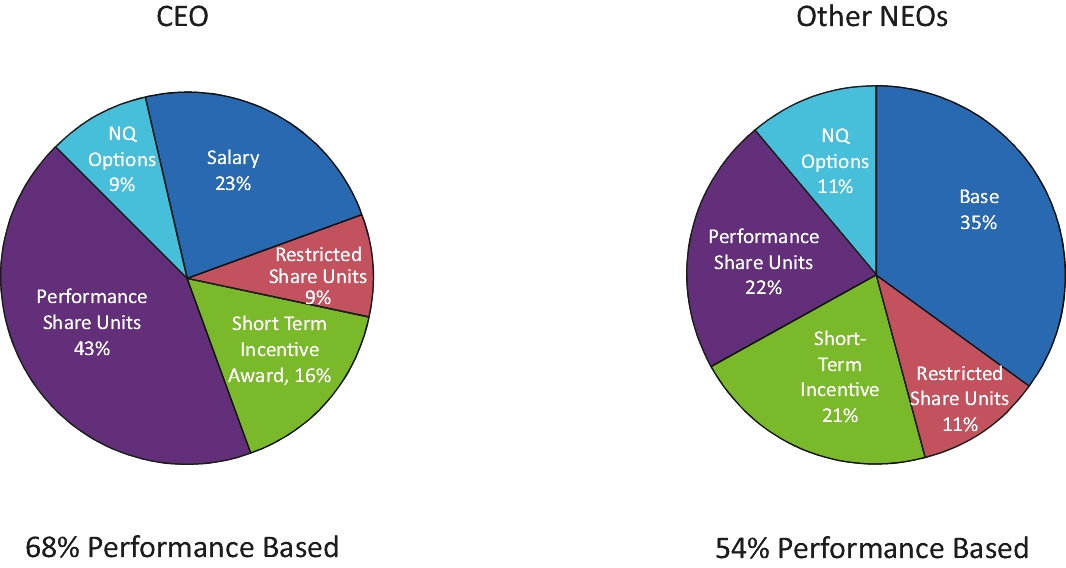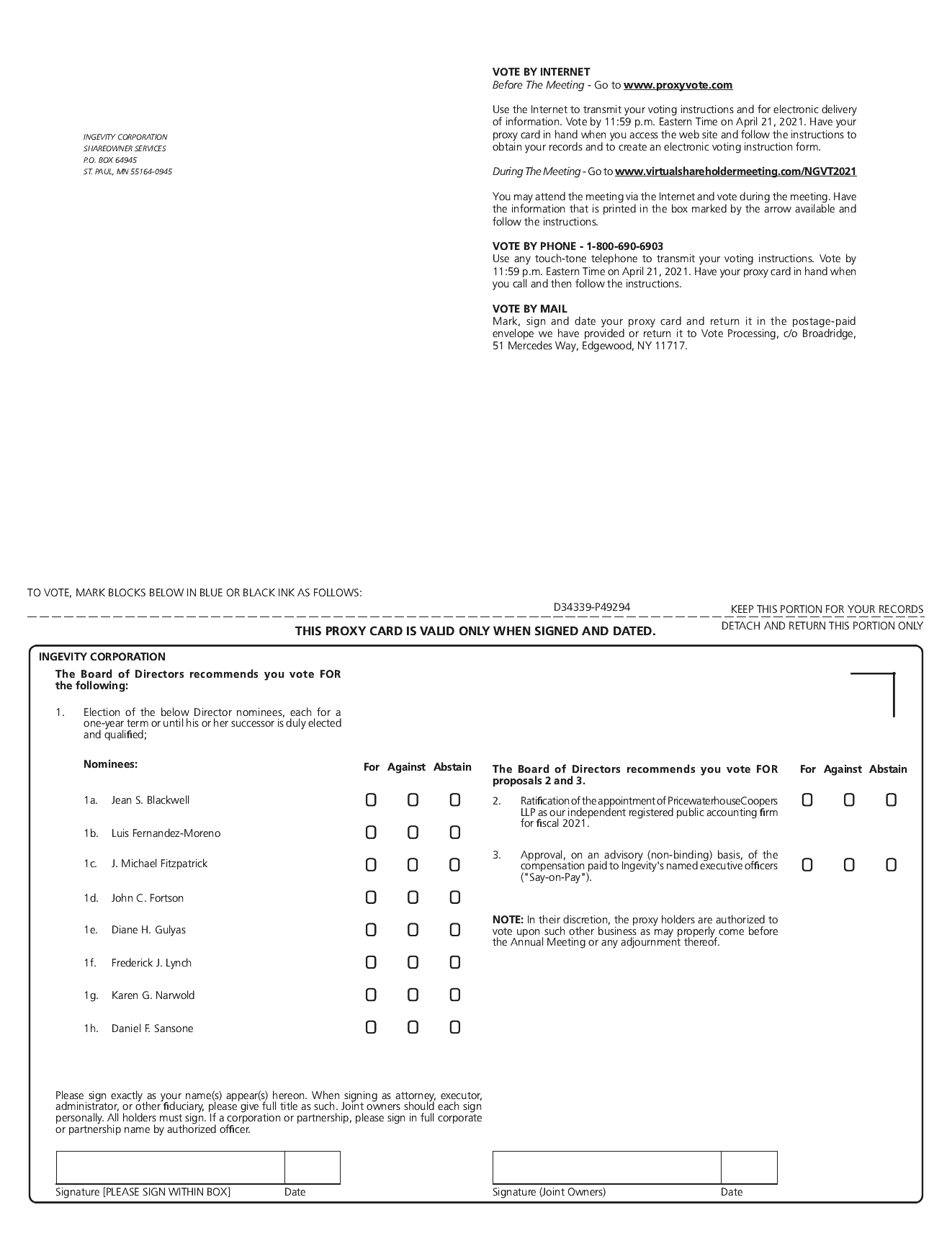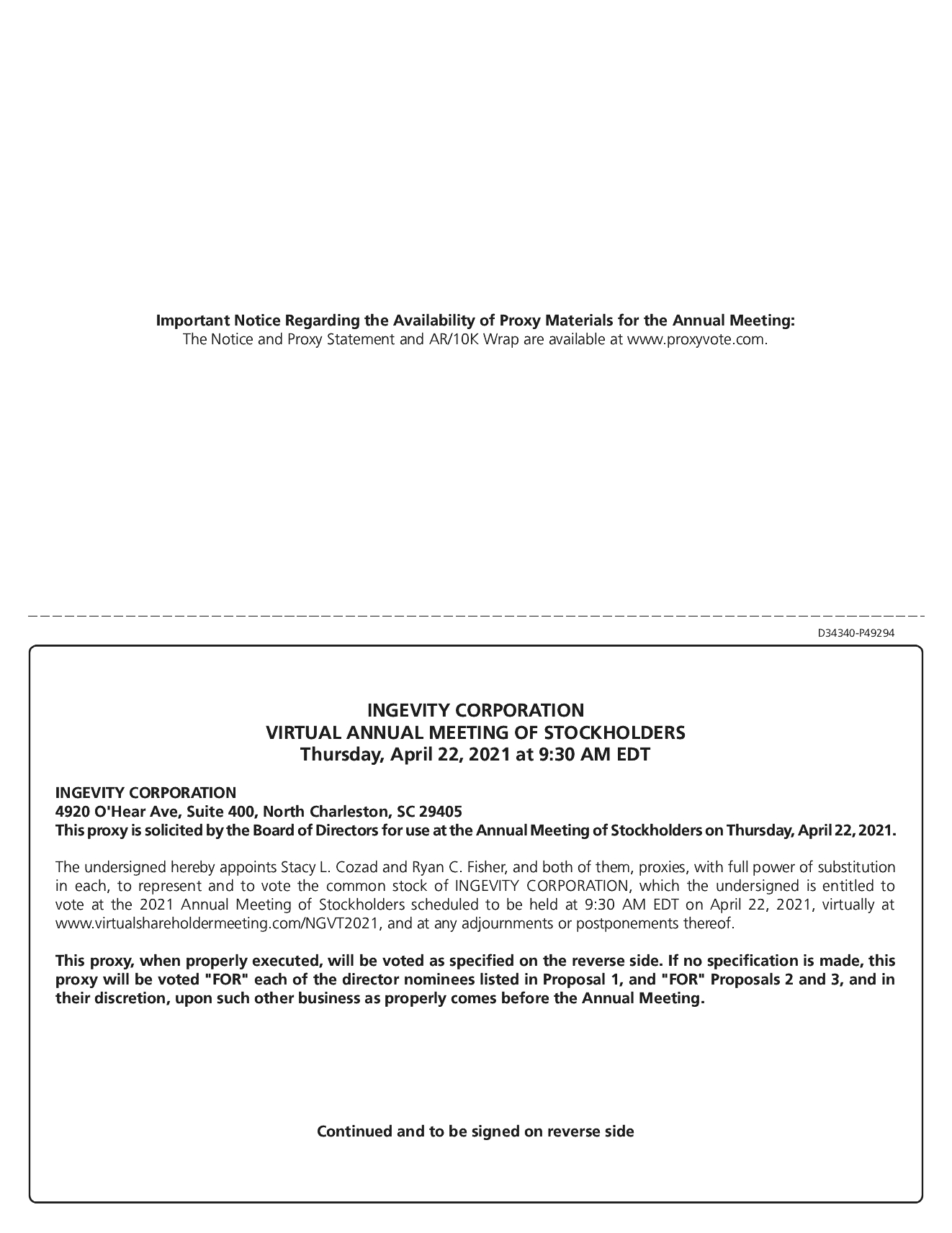APPENDIX-A NON-GAAP FINANCIAL MEASURES
In the CD&A, Ingevity has presented certain financial measures, defined below, which have not been prepared in accordance with U.S. generally accepted accounting principles (“GAAP”) These financial measures are not meant to be considered in isolation or as a substitute for the most directly comparable financial measure calculated in accordance with GAAP.
Cumulative Earnings (Loss) per Share (“Cumulative EPS”)
“Cumulative EPS” is defined as continuing operations diluted EPS attributable to Ingevity stockholders plus restructuring and other (income) charges, net per share, acquisition and other-related costs per share, impairment charges, per share, pension and postretirement settlement and curtailment (income) charges, net per share, tax expense (benefit) recorded as a result of legislative tax rate changes and certain discrete tax items such as excess tax benefits on share-based compensation vesting per share, Performance Materials’ intellectual property litigation expense per share, and Certain non-cash (income) charges per share (which includes: cumulative effect of accounting changes per share, the effect of new accounting pronouncements per share, last-in, first-out (LIFO) adjustment (income) expense per share, (gain) loss on currency translation and hyperinflation (gain) loss per share, COVID-19-related customer provisions per share) and the income tax expense (benefit) per share on these items.
The table below reconciles Cumulative to diluted earnings per share, the most directly comparable financial measure calculated in according with GAAP.
Adjusted EBITDA
“Adjusted EBITDA” is defined as Net income (loss) plus provision (benefit) for income taxes, interest expense, net, depreciation and amortization, separation costs, restructuring and other (income) charges, net, acquisition and other-related costs, and pension and postretirement settlement and curtailment (income) charges, net.
In section entitled “2020 Business Highlights” discuss Adjusted EBITDA. For more information regarding the non-GAAP financial measure Adjusted EBITDA including a reconciliation to the most directly comparable financial measure calculated in accordance with GAAP, please see “Management’s Discussion and Analysis of Financial Condition and Results of Operations — Use of Non-GAAP Financial Measures” on page 40 of the 2020 Form 10-K.
Company STIP-Adjusted EBITDA
“Company STIP-Adjusted EBITDA” is defined as Adjusted EBITDA, plus or minus the impact of certain non-cash gains or charges.
In the section entitled “Short-Term Incentive Plan (“STIP”) and 2020 Awards” in the CD&A we discuss Company STIP-Adjusted EBITDA for fiscal year 2020. Company STIP-Adjusted EBITDA was selected as a performance measure under the Short-Term Incentive Plan for 2020 because Adjusted EBITDA is the primary performance measurement of the Company’s earnings guidance and drives behavior consistent with the stockholders’ interests.
Additionally, for compensation award purposes, eliminating the other certain non-cash gains or losses was appropriate because the impacts of both were primarily driven by external market conditions and not by decisions management could directly influence.
The table below reconciles Company STIP-Adjusted EBITDA to net income (loss), the most comparable financial measure calculated in accordance with GAAP.
Business Unit STIP-Adjusted EBITDA (“BU STIP-Adjusted EBITDA”)
“BU STIP-Adjusted EBITDA” is defined as Segment EBITDA, plus or minus the impact of Separation-related Reimbursement Awards and certain non-cash gains or charges.
In the section entitled “Short-Term Incentive Plan (“STIP”) and 2020 Awards” in the CD&A we discuss each segment's BU STIP-Adjusted EBITDA for fiscal year 2020. These metrics were selected as a performance measure under the Short-Term Incentive Plan for 2020 because Segment EBITDA is the primary performance measurements of the Company’s segment earnings and drives behavior consistent with the stockholders’ interests.


























